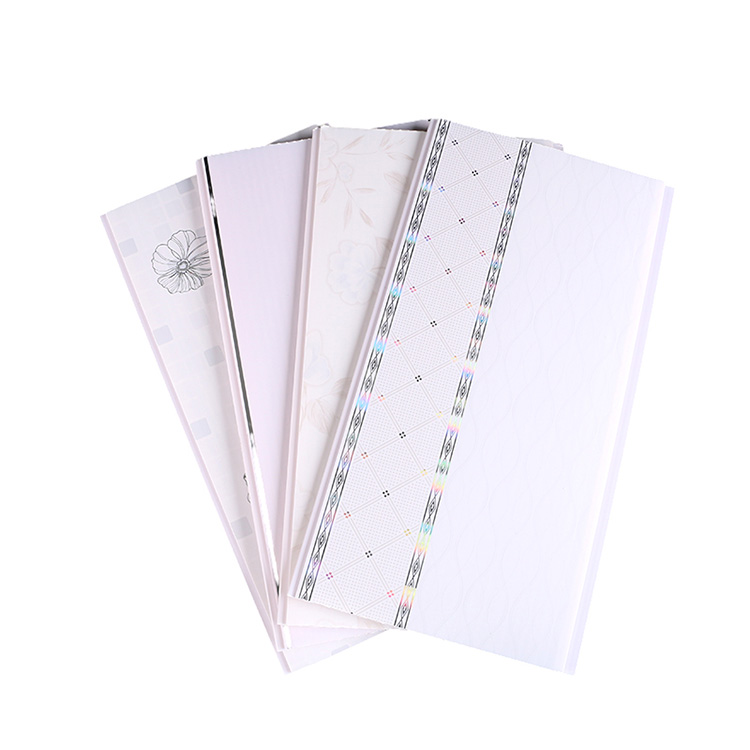Advancements in Manufacturing Technology: Pioneering Extended Durability and Performance of PVC Panels
2024-04-16
In the realm of construction and interior design, PVC (Polyvinyl Chloride) panels have emerged as a versatile and cost-effective solution for various applications. With their inherent properties such as water resistance, versatility, and ease of installation, PVC panels have become a popular choice for both residential and commercial projects. However, the ongoing quest for innovation and improvement has led to significant advancements in manufacturing technology, revolutionizing the durability and performance of PVC panels. Let's delve into how these advancements are shaping the future of PVC panel production.
Evolution of Manufacturing Techniques
The traditional manufacturing process of PVC panels involved extrusion or molding of PVC resin into flat sheets, which were then cut into panels of desired sizes. While this method was effective, it had limitations in terms of precision, consistency, and quality control. However, with the advent of advanced manufacturing technologies, such as computer-controlled machinery and automation, the production process has undergone a paradigm shift.
Enhanced Material Composition
One of the key areas of advancement lies in the formulation of PVC compounds used in panel production. Manufacturers are now able to tailor the composition of PVC compounds by incorporating additives and modifiers that enhance specific properties such as strength, durability, and UV resistance. This allows for the creation of PVC panels that are not only aesthetically pleasing but also highly durable and long-lasting, even in challenging environments.
Improved Surface Treatments
Surface treatments play a crucial role in enhancing the durability and performance of PVC panels. Advancements in surface treatment technologies have enabled manufacturers to apply protective coatings and finishes that provide resistance against scratches, stains, and fading. Additionally, innovative coating techniques, such as UV curing and electrostatic deposition, ensure uniform coverage and adhesion, resulting in a more robust and resilient surface.
Reinforcement and Structural Integrity
To meet the demands of high-traffic areas and commercial settings, manufacturers have focused on reinforcing PVC panels to enhance their structural integrity. This involves incorporating reinforcement layers, such as fiberglass or polyester mesh, into the panel structure to improve strength, impact resistance, and dimensional stability. As a result, modern PVC panels exhibit greater resistance to bending, warping, and deformation, ensuring long-term performance in demanding applications.
Precision Manufacturing and Customization
Advanced manufacturing technologies enable precision engineering and customization of PVC panels to meet specific design requirements and performance standards. Computer-aided design (CAD) and computer numerical control (CNC) machining allow for precise cutting, shaping, and profiling of panels with minimal waste and error. This level of precision ensures tight tolerances, seamless joints, and consistent quality across batches, contributing to the overall durability and aesthetic appeal of PVC panels.
Sustainability and Eco-Friendly Practices
In line with growing environmental concerns, manufacturers are increasingly adopting sustainable practices and eco-friendly materials in PVC panel production. This includes using recycled PVC resin, minimizing waste generation, and reducing energy consumption during manufacturing processes. Furthermore, advancements in recycling technologies enable the recycling and reprocessing of post-consumer PVC waste, closing the loop and reducing the environmental impact of PVC panel production.
Conclusion
In conclusion, advancements in manufacturing technology have propelled the evolution of PVC panels, leading to enhanced durability, performance, and sustainability. Through innovative material formulations, surface treatments, reinforcement techniques, precision manufacturing, and eco-friendly practices, manufacturers are able to produce PVC panels that exceed expectations in terms of quality, longevity, and functionality. As a result, PVC panels continue to be a preferred choice for architects, designers, and builders seeking durable, versatile, and aesthetically pleasing solutions for interior and exterior applications. With ongoing research and development, the future of PVC panels holds even greater promise for innovation and excellence in construction and design.



